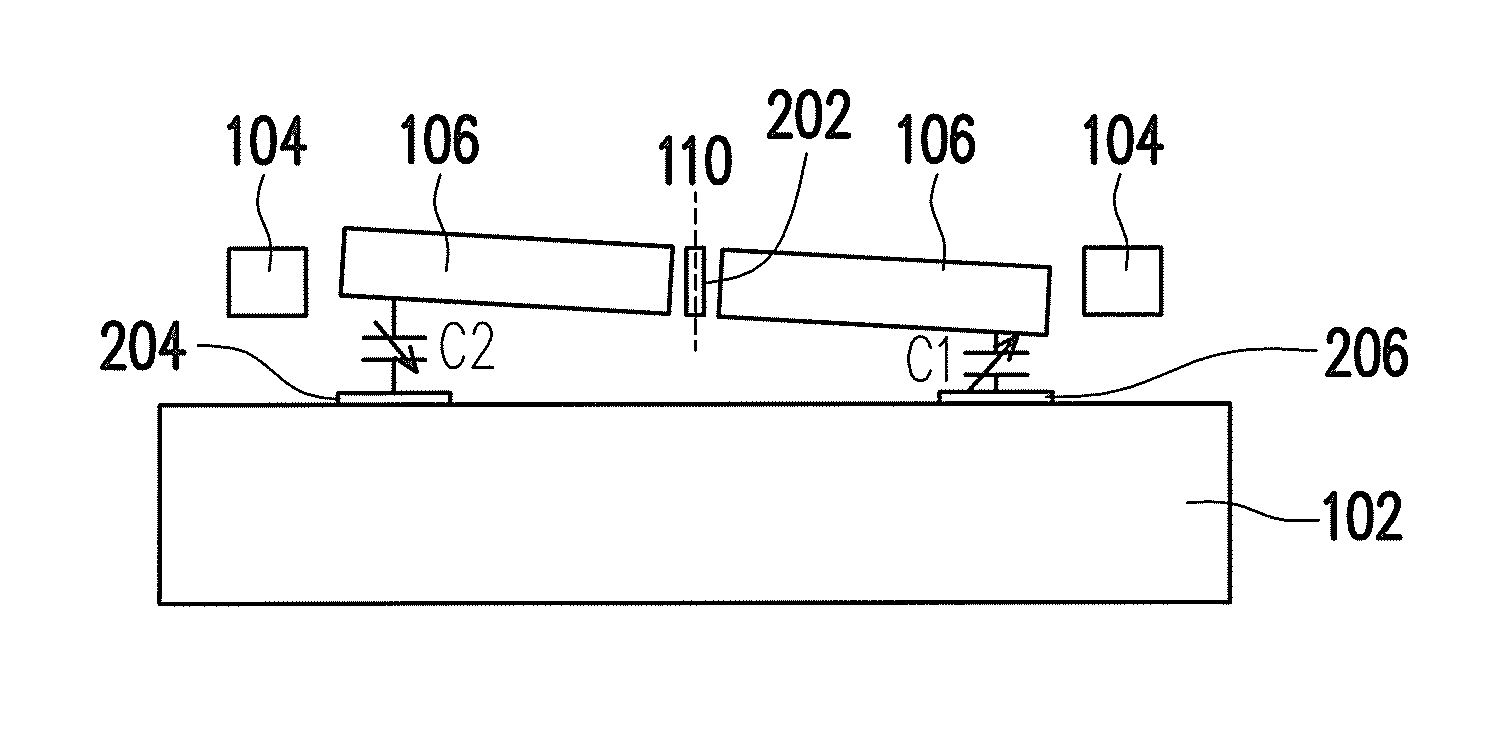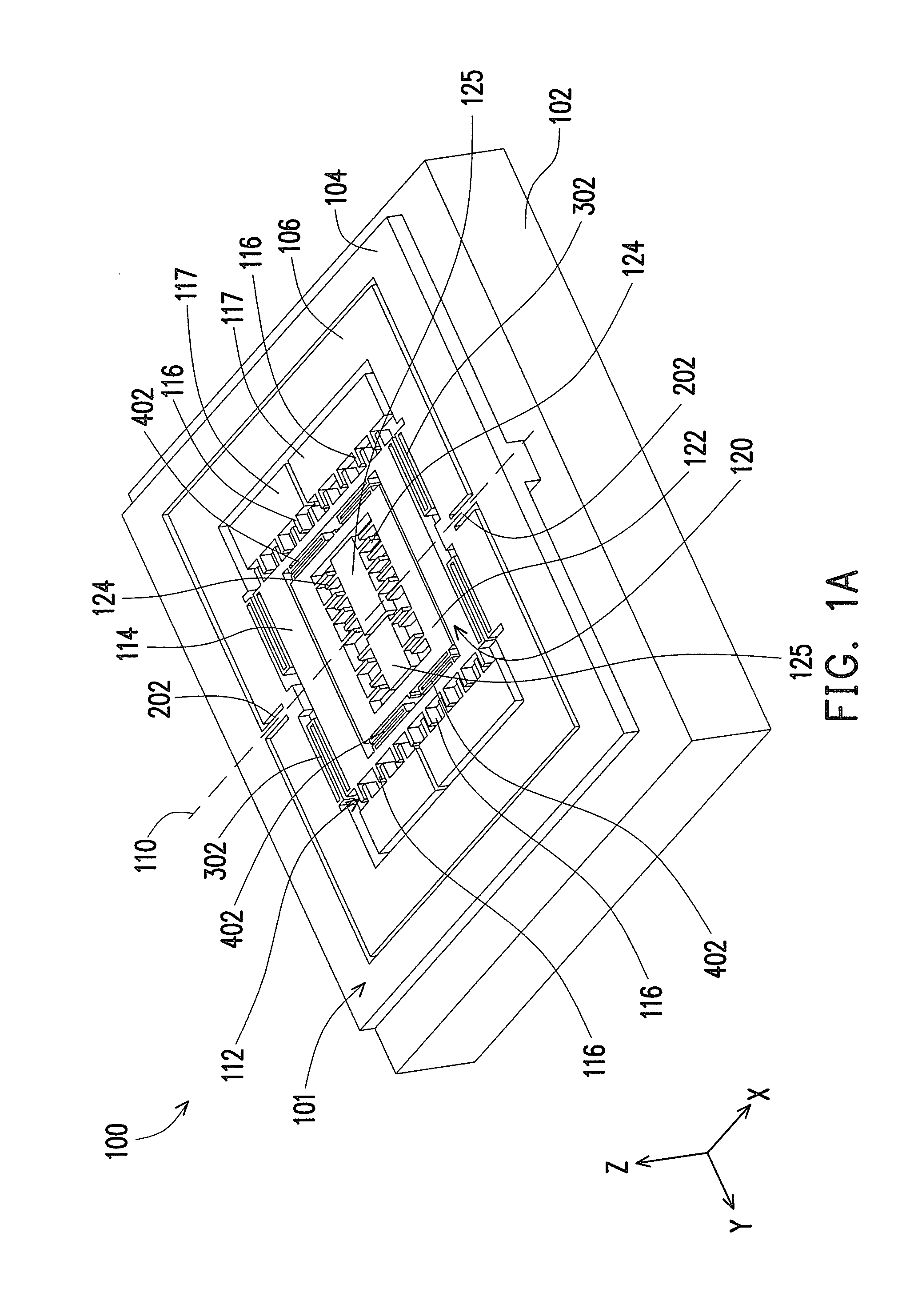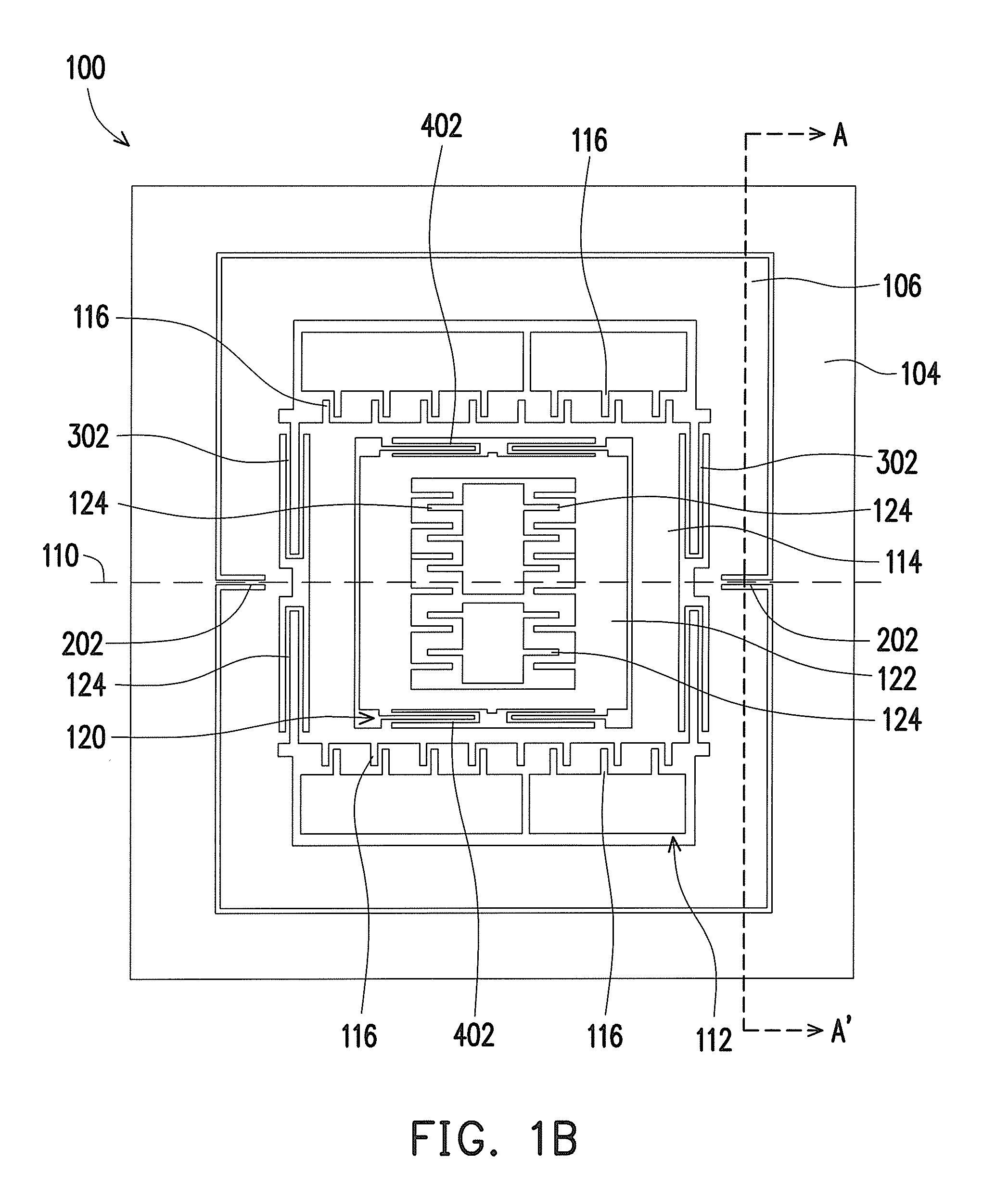Multi-axis capacitive accelerometer
a capacitive accelerometer and multi-axis technology, applied in the field of accelerometers, can solve the problems of affecting the performance of cross-axis sensitivity, requiring the size and cost of a multi-axis accelerometer, and poor cross-axis sensitivities, so as to reduce the structure dimension reduce interference, and increase the linearity of the multi-axis capacitive accelerometer
- Summary
- Abstract
- Description
- Claims
- Application Information
AI Technical Summary
Benefits of technology
Problems solved by technology
Method used
Image
Examples
Embodiment Construction
[0019]Reference will now be made in detail to the embodiments of the disclosure, examples of which are illustrated in the accompanying drawings. Wherever possible, the same reference numbers are used in the drawings and the description to refer to the same or like parts.
[0020]FIG. 1A is a 3-dimensions diagram of a multi-axis capacitive accelerometer according to an embodiment of the disclosure and FIG. 1B is a top-view diagram of the multi-axis capacitive accelerometer of FIG. 1A. Referring to FIGS. 1A and 1B, a multi-axis capacitive accelerometer 100 provided by the embodiment includes a substrate 102 and an element structure layer 101. The element structure layer 101 comprises an anchor 104, a first mass 106, a second mass 114, a first independent set of springs 202, a second independent set of springs 302 and at least a comb-shaped set of capacitors 116. The anchor 104 herein is fixed on the substrate 102, the first mass 106 is asymmetrically suspended on the anchor 104 by means ...
PUM
 Login to View More
Login to View More Abstract
Description
Claims
Application Information
 Login to View More
Login to View More - R&D
- Intellectual Property
- Life Sciences
- Materials
- Tech Scout
- Unparalleled Data Quality
- Higher Quality Content
- 60% Fewer Hallucinations
Browse by: Latest US Patents, China's latest patents, Technical Efficacy Thesaurus, Application Domain, Technology Topic, Popular Technical Reports.
© 2025 PatSnap. All rights reserved.Legal|Privacy policy|Modern Slavery Act Transparency Statement|Sitemap|About US| Contact US: help@patsnap.com



